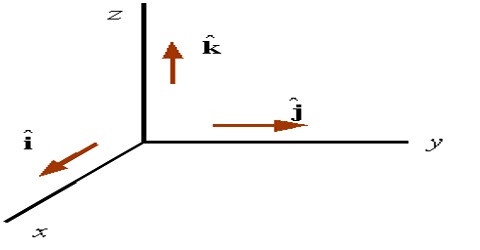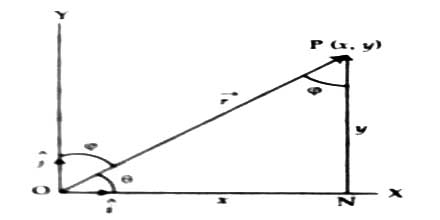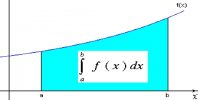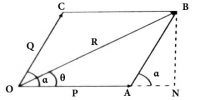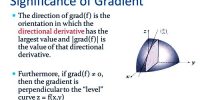Representation of vector by unit vector or with components
When a vector is represented graphically, its magnitude is represented by the length of an arrow and its direction is represented by the direction of the arrow. While expressing a vector with components we will consider two cases. e.g. in two dimensions and in three dimensions. Here two dimensional case is discussed below.
Resolution in two dimensions: Let OX and OY be the straight lines perpendicular to each other and represent X and Y axes respectively [Figure].
In XY plane the line OP, making an angle θ with X-axis, represents the vector ř both in magnitude and direction. Let consider the co-ordinate of P is (x, y) and in positive X and Y-axes corresponding unit vectors are ȋ and ĵ respectively.
Let the normal PN be drawn from P on X-axis.
Now from figure, we get
ON = x; NP = y and OP = r
so, ON→ = xȋ, NP→ = yĵ ; and OP→ = ř
From the triangle rule,
OP→ = ON→ + NP→
or, ř = ȋ + ĵ
Modulus of this vector,
From figure, we get;
OP2 = ON2 + NP2
or, r2 = i2 + y2
then, r = √( i2 + y2)
